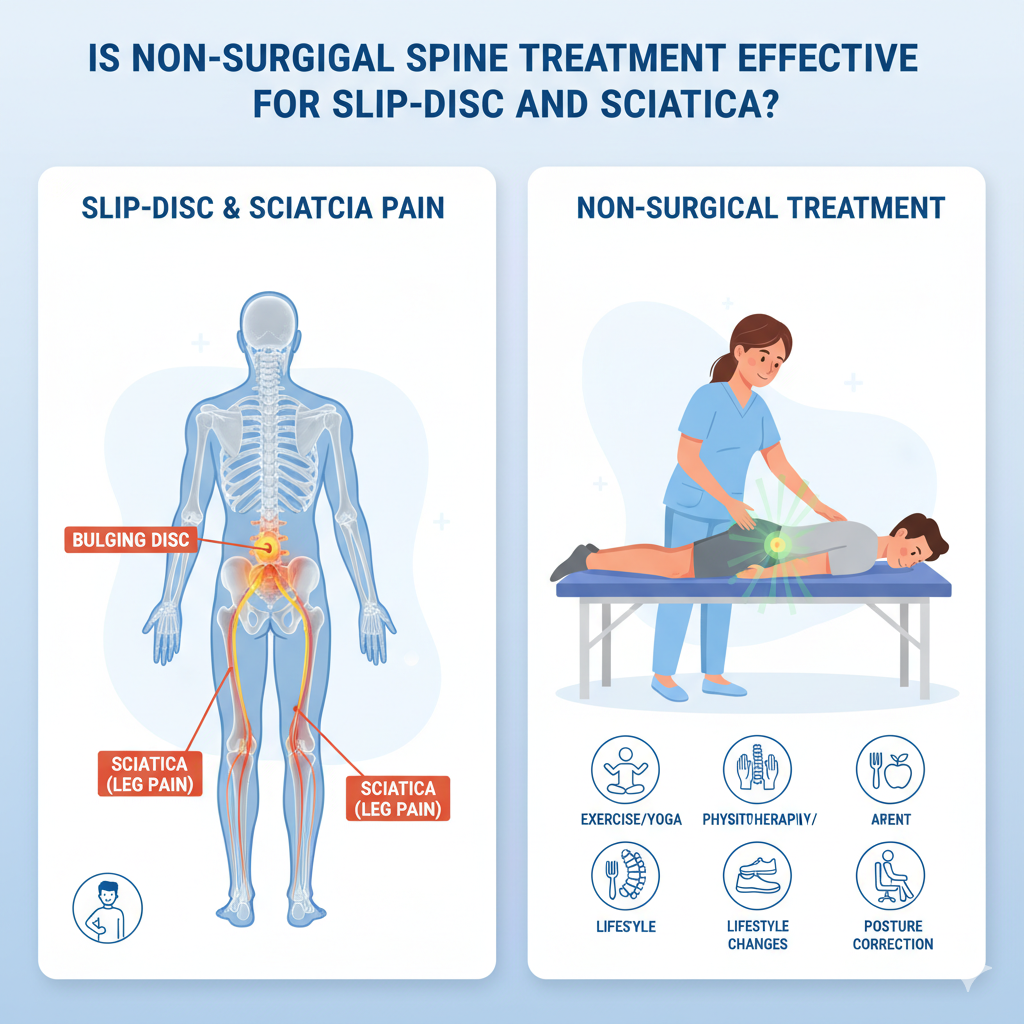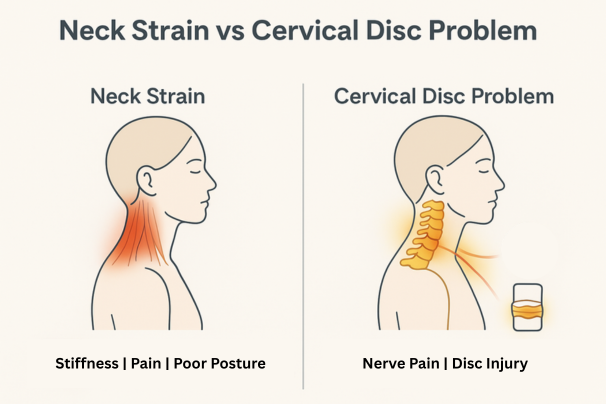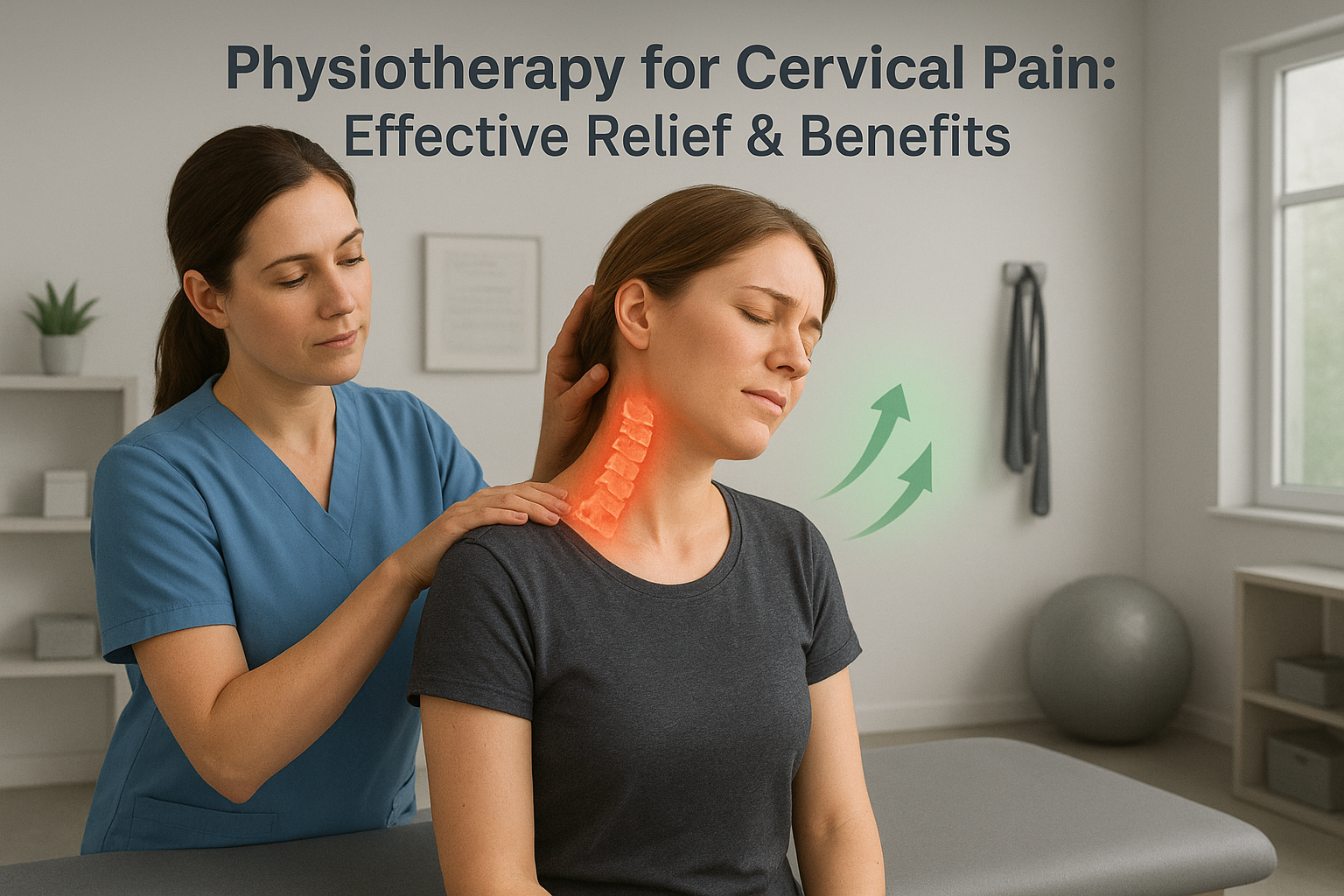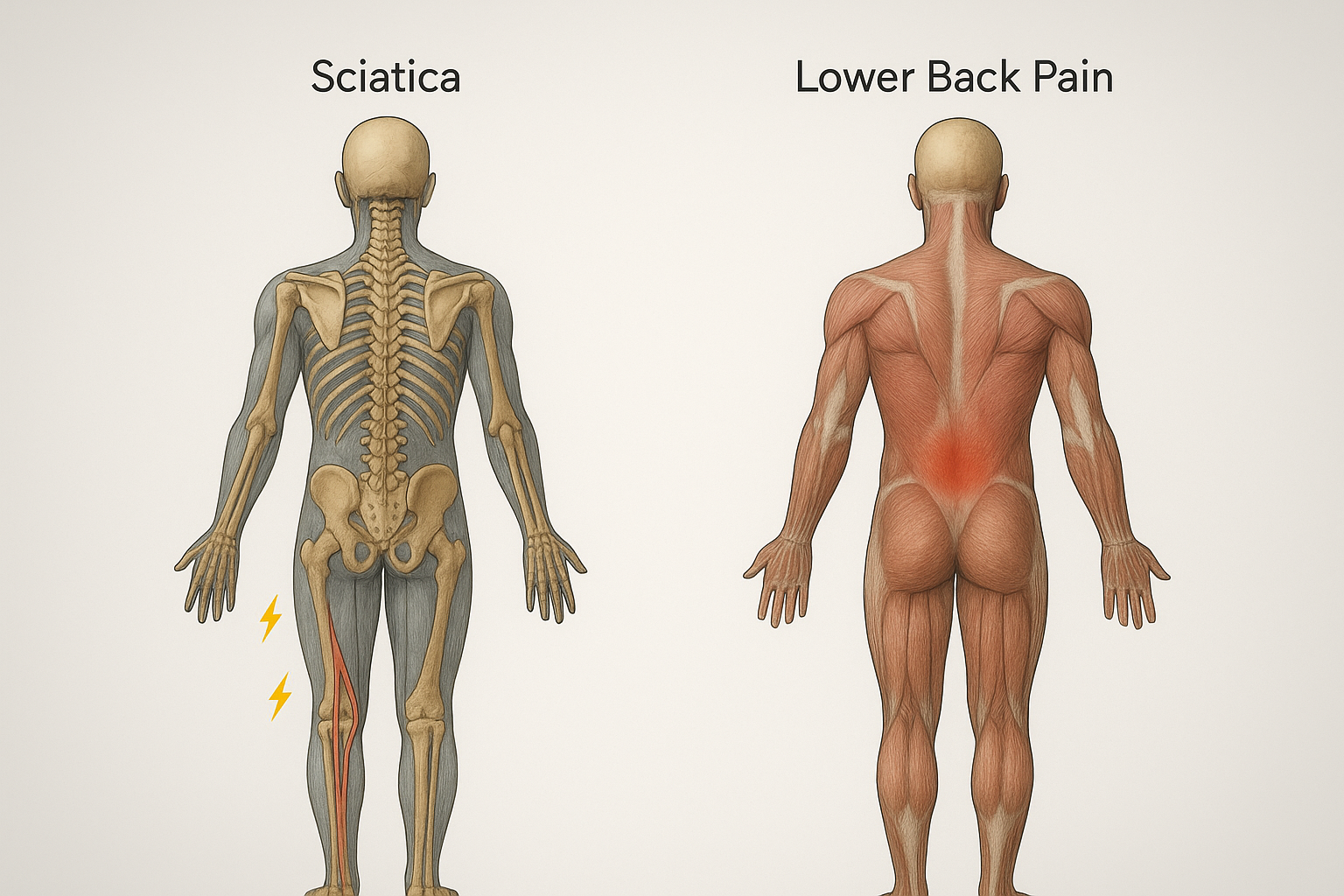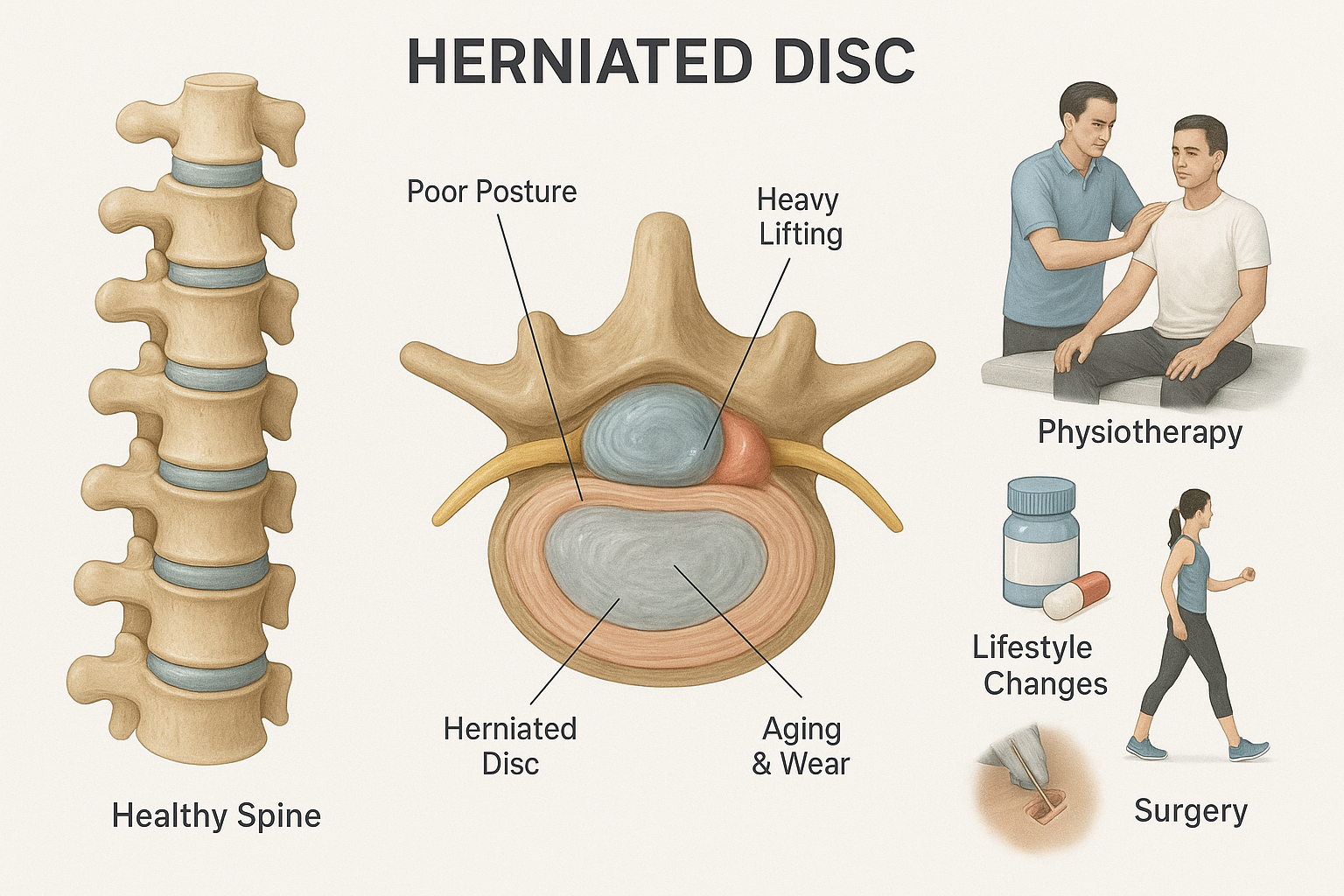Cervical spondylosis, or neck arthritis, is a prevalent degenerative disorder of the cervical spine. It arises from the deterioration of cartilage, bones, and spinal discs due to wear and tear, which causes pain, stiffness, and reduced mobility of the neck. Various factors such as poor posture, excessive screen time, lack of physical activity, and age contribute to its development. The good news is that yoga presents a holistic and practical solution for the management of cervical spondylosis. Not only does yoga reduce symptoms, but it also strengthens the neck, shoulders, and spine, which improves quality of life overall.
In this comprehensive guide, we’ll explore the benefits of yoga for cervical spondylosis, share the most effective yoga poses, and provide tips to make your practice safe and impactful.
What Causes Cervical Spondylosis?
Before diving into yoga’s benefits, it’s essential to understand the underlying causes of cervical spondylosis. Common factors include:
- Poor Posture: Spending hours hunched over a desk or screen puts strain on the neck and shoulders.
- Prolonged Screen Time: Excessive use of electronic devices contributes to “tech neck,” which is a leading cause of cervical spine issues.
- Sedentary Lifestyle: Lack of physical activity weakens supporting muscles in the neck and shoulders, increasing stress on the cervical spine.
- Age-Related Degeneration: Natural aging leads to wear and tear of discs, ligaments, and joints.
- Injury or Trauma: Whiplash injuries or accidents can accelerate cervical spine degeneration.
Recognizing these factors is key to managing cervical spondylosis, and integrating yoga into your routine is a proactive step toward healing.
10 Best Yoga Poses for Cervical Spondylosis
Here are the 10 best yoga poses for cervical spondylosis to help you manage pain, restore neck health, and enhance overall well-being.
1. Tadasana (Mountain Pose)
Tadasana is a foundational yoga pose that helps improve posture and alignment, reducing strain on the neck.

How to Do It:
- Stand with feet hip-width apart and arms by your side.
- Engage your core, lengthen your spine, and keep your chin parallel to the ground.
- Take deep breaths while maintaining this posture for 30 seconds to 1 minute.
Benefits:
- Strengthens neck and shoulder muscles.
- Improves posture and spinal alignment.
- Enhances balance, stability, and body awareness.
- Helps prevent slouching, reducing strain on the cervical spine.
2. Bhujangasana (Cobra Pose)
Enhances blood circulation in the neck and shoulders.

How to Do It:
- Lie on your stomach with your legs extended and palms placed under your shoulders.
- Inhale and lift your chest while keeping your elbows slightly bent.
- Hold for 15-30 seconds, then slowly release back to the ground.
Benefits:
- Strengthens upper back and neck muscles.
- Reduces stiffness in the spine and shoulders.
- Improves blood circulation in the neck and shoulders.
- Helps counteract the forward-head posture caused by excessive screen use.
3. Marjariasana-Bitilasana (Cat-Cow Pose)
This gentle flow between two poses increases flexibility and mobility in the cervical spine.

How to Do It:
- Start in a tabletop position with hands under shoulders and knees under hips.
- Inhale, arch your back (Cow Pose), lifting your head and chest.
- Exhale, round your back (Cat Pose), tucking your chin towards your chest.
- Repeat for 8-10 rounds, synchronizing movement with breath.
Benefits:
- Enhances spinal flexibility and mobility.
- Relieves tension and stiffness in the neck and shoulders.
- Encourages better coordination between movement and breath.
- Boosts circulation to the cervical spine, promoting healing.
4. Balasana (Child’s Pose)
Balasana is a relaxing pose that helps release tension in the neck and upper back while promoting deep relaxation.

How to Do It:
- Sit on your heels and extend your arms forward, lowering your forehead to the mat.
- Breathe deeply, holding for 30 seconds to 1 minute.
- Relax into the stretch, allowing the spine to lengthen naturally.
Benefits:
- Stretches and relaxes the spine and upper back.
- Reduces stress and tension in the neck and shoulders.
- Encourages mindfulness and relaxation, reducing stress-related pain.
- Improves flexibility in the lower back, complementing cervical spine health.
5. Setu Bandhasana (Bridge Pose)
This pose strengthens the back and promotes spinal flexibility, reducing strain on the neck.

How to Do It:
- Lie on your back, bend your knees, and place your feet hip-width apart.
- Inhale, lift your hips while pressing your feet and shoulders into the ground.
- Hold for 15-30 seconds, then release.
Benefits:
- Strengthens neck, shoulders, and upper back muscles.
- Improves spinal alignment and posture.
- Relieves stress and tension in the cervical spine.
It enhances blood circulation to the brain, promoting relaxation.
6. Ardha Matsyendrasana (Half Spinal Twist)
A gentle spinal twist that improves mobility and relieves stiffness in the cervical region.

How to Do It:
- Sit with your legs extended and bend your right knee, placing the foot outside the left thigh.
- Place your right hand behind and twist your torso to the right.
- Hold for 15-30 seconds, then switch sides.
Benefits:
- Increases spinal flexibility and mobility.
- Reduces tension in the neck, shoulders, and back.
Stimulates the nervous system, promoting relaxation and reducing pain perception.
7. Uttanasana (Standing Forward Bend)
This pose stretches the spine and relaxes the neck muscles, reducing stress and stiffness.

How to Do It:
- Stand with feet hip-width apart and slowly bend forward, letting your head hang.
- Hold onto your elbows and stay for 30 seconds to 1 minute.
Benefits:
- Releases tension in the neck, shoulders, and spine.
- Enhances blood flow to the head, promoting relaxation.
- Reduces stress-related neck pain and headaches.
8. Shavasana (Corpse Pose)
Shavasana promotes deep relaxation and stress relief, which is crucial for cervical pain management.

How to Do It:
- Lie on your back with arms by your side and palms facing up.
- Close your eyes, focus on deep breathing, and relax for 5-10 minutes.
Benefits:
- Relaxes the nervous system and reduces chronic pain.
- Helps release built-up tension in the cervical region.
Improves sleep quality, which is essential for healing.
9. Sukhasana with Neck Stretch (Easy Pose)
This seated pose combined with gentle neck stretches helps to loosen tension in the cervical spine.

How to Do It:
- Sit cross-legged and maintain a straight back.
- Slowly tilt your head to the right, move your ear toward your shoulder.
- Hold for 15-20 seconds, then switch sides.
Benefits:
- Eases stiffness and tightness in the neck.
- Corrects posture and spinal alignment.
Reduces discomfort caused by prolonged sitting or screen time.
10. Viparita Karani (Legs-Up-the-Wall Pose)
This restorative posture assists in decreasing tension and stress in the back and neck.

How to Do It:
- Lie on your back with your legs up against a wall.
- Relax your arms at your side and inhale deeply.
- Maintain for 5-10 minutes.
Benefits:
- Improves blood flow to the upper body and brain.
- Decreases stress and fatigue, enhancing relaxation.
- Assists in relieving neck discomfort due to tension and poor body posture. Benefits of Yoga for Cervical Spondylosis
Yoga provides various benefits that tackle both symptoms and causes of cervical spondylosis. Here’s how it works:
1. Relief From Pain Through Gentle Stretching
Yoga stretches the neck, shoulders, and upper back gently, loosening the muscle tension and easing pain. It also enhances the flexibility of contracted muscles, providing relief.
2. Decreased Stiffness and Enhanced Mobility
Long-term stiffness in the shoulders and neck can greatly restrict movement. Daily yoga practice enhances the range of motion, which makes everyday activities more comfortable.
3. Enhanced Posture and Alignment
Bad posture is one of the main causes of cervical issues. Yoga aligns the spine, develops core muscles, and enables you to stand tall with ease.
4. Muscles of Support Strengthened
Weak shoulder and neck muscles may worsen cervical spine conditions. Yoga conditions the muscles in the neck and shoulders, supporting the spine more effectively and lessening the burden on cervical discs.
5. Improved Blood Flow
Yoga exercises and breathing help bring blood into the cervical spine to repair damaged tissue and alleviate inflammation.
6. Stress and Anxiety Relief
Stress commonly presents as tension in the neck and shoulders, exacerbating cervical pain. Yoga’s focus on mindfulness, breathing, and relaxation reduces cortisol levels, enhancing emotional health.
7. Holistic Health Benefits
In addition to cervical spondylosis, yoga optimizes overall health by enhancing joint health, strengthening immunity, and enhancing mental clarity.
Regular practice of these yoga postures for cervical spondylosis can greatly enhance flexibility of the neck, reduce pain, and enhance posture. If you have intense pain, seek advice from a healthcare provider before attempting any yoga regimen.
Tip: Integrate yoga with lifestyle modifications such as good posture, drinking plenty of water, taking regular breaks from screens, and adding stress management practices to avoid cervical pain from escalating.
Begin to integrate these poses into your daily routine to experience a pain-free, flexible neck and a healthier spine!

